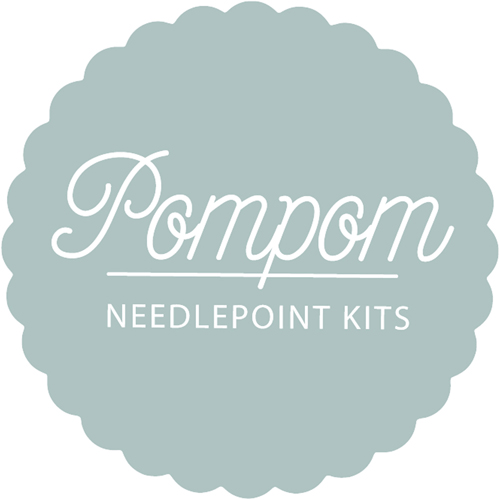
At POMPOM Needlepoint, we often mention that we’re inspired by the Slow Movement—a philosophy that feels more relevant than ever. But what exactly does it mean to embrace “Slow” in today’s world? I thought it was time to explore this idea a little more, especially as it relates to creativity, craft, and the simple joy of making something by hand.
I recently came across a short animated film called Music and Life, based on a recording by the philosopher Alan Watts and animated by Trey Parker and Matt Stone (yes, the South Park creators). Despite its surprising origins, the film captures something deeply true about life’s pace. Watts compares life not to a journey with a destination, but to music—where the joy is in playing, not rushing to the final note. It’s a powerful metaphor, and one that feels especially resonant with the kind of mindful making we advocate at POMPOM. (Just imagine the same sentiment—with added needlepoint!)
The Philosophy of Slow
The Slow Movement began in Italy in the late 1980s as a protest against the rise of fast food. Slow Food was about more than just cuisine; it was a cultural stand for heritage, locality, sustainability, and the pleasure of shared meals. From there, the movement evolved—expanding into all areas of life. Today, it includes Slow Living, Slow Travel, Slow Fashion, and even Slow Craft.
At its heart, the movement asks us to rethink our relationship with time. As author Carl Honoré puts it in his book In Praise of Slow:
“The Slow Movement is a cultural revolution against the notion that faster is always better. The Slow philosophy is not about doing everything at a snail’s pace. It’s about seeking to do everything at the right speed—savouring the hours and minutes rather than just counting them. Doing everything as well as possible, instead of as fast as possible. It’s about quality over quantity in everything from work to food to parenting.”
Why Needlepoint Fits So Well
Needlepoint, by its very nature, resists speed. It’s a craft that invites you to slow down, focus your hands, quiet your mind, and become absorbed in a rhythm that’s meditative, tactile, and grounding. It’s not about rushing to the end, but about enjoying each stitch—each colour, each shift in shape or texture. That’s why we believe our kits naturally embody the principles of the Slow Movement.
When we design at POMPOM, we’re not just thinking about the finished cushion. We think about your experience as a stitcher—the visual rhythm, the feel of the wool, the pace of progress. We use a thoughtful balance of colours and forms to keep each project interesting and absorbing, with moments of simplicity and challenge woven together. The result is something deeply satisfying to make, and beautiful to live with.
And while the final cushion will last for years, it’s the process of making it that we find most powerful.
A Craft That Moves With You
What we love most about needlepoint is its flexibility. It’s contemplative, yes—but it can also be wonderfully sociable. You can stitch in silence, or while chatting. You can listen to music, the radio, a podcast, or simply let your thoughts wander. You can work for five minutes or five hours. Stitch on the train, in the park, on the sofa, in bed, in your lunch break or on a quiet Sunday morning. I’ve stitched in all these places myself.
One of my favourite rituals used to be taking just a few moments to stitch before teaching my university art classes. That brief pause—a moment of personal creativity before the day’s demands—was incredibly grounding.
Making Time for What Matters
In a world that urges us to go faster, needlepoint invites us to go deeper. It reminds us to savour the process, not just chase the result. It celebrates making with care, with intention, and with joy.
So when we say that POMPOM Needlepoint is inspired by the Slow Movement, we mean that we’re creating more than just kits—we’re inviting you to make time for yourself, to reconnect with creativity, and to bring beauty into your home through the simple, powerful act of making.
